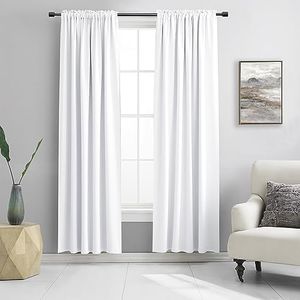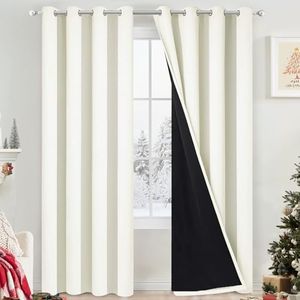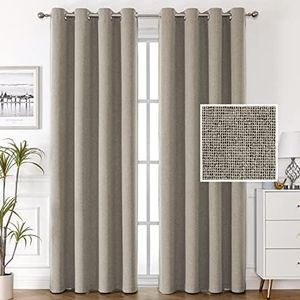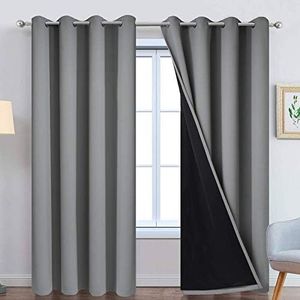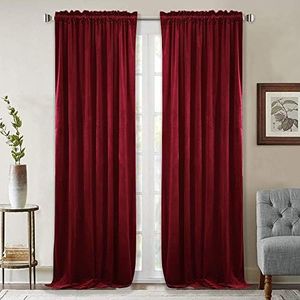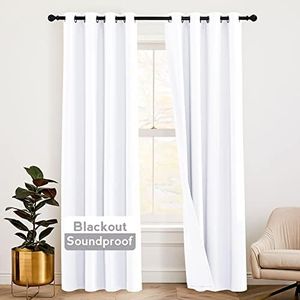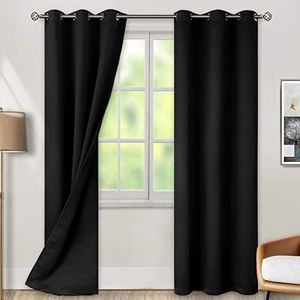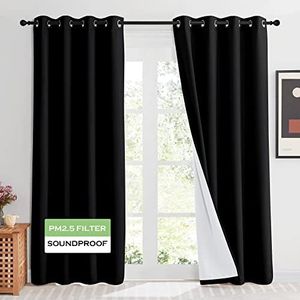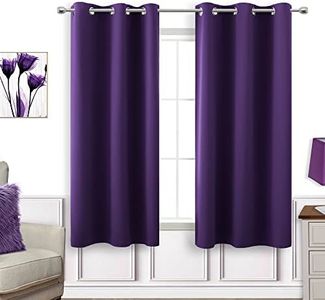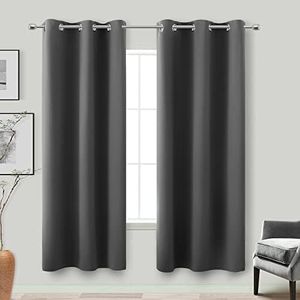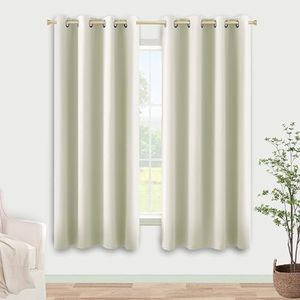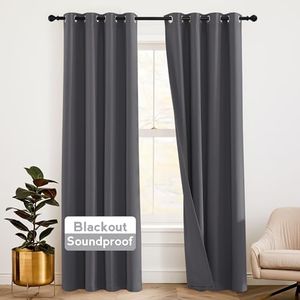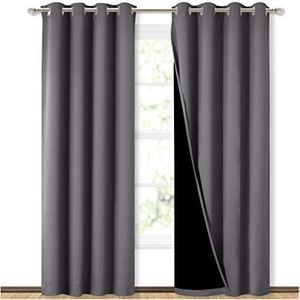We Use CookiesWe use cookies to enhance the security, performance,
functionality and for analytical and promotional activities. By continuing to browse this site you
are agreeing to our privacy policy
10 Best Sound Dampening Curtains
From leading brands and best sellers available on the web.By clicking on a link to a third party's website, log data is shared with that third party.
Buying Guide for the Best Sound Dampening Curtains
Sound-dampening curtains, sometimes called noise-reducing or acoustic curtains, are designed to help block or muffle outside noises from entering a room or keep sounds from escaping. They’re popular for bedrooms, home offices, recording spaces, and anywhere peace and quiet is needed. Picking the best option is about understanding where you want to use them, the level of noise you’re dealing with, and the physical characteristics of your windows or doors. The best curtains will match your specific needs for noise reduction, fit well, and suit your decorating style.Material Thickness and DensityThe thickness and density of a sound-dampening curtain refers to how bulky and heavy the fabric is. This is important because the heavier and denser the material, the more effectively it can muffle or absorb sound. Curtains are often available in lightweight, medium, or heavy-duty thickness, which can usually be felt or seen (sometimes listed in GSM or ounces per square yard). For mild street noise or basic privacy, a medium-weight curtain may be enough, while for substantial noise problems like heavy traffic or neighbors, a thicker, denser curtain is ideal. You should assess the level of noise in your space; more problematic noise needs a denser curtain.
Curtain Size and CoverageSize and coverage refer to both the length and the width of the curtain and how much of your window or wall it actually covers. A wider and longer curtain can cover more area, blocking more sound from sneaking around the edges. Most experts recommend getting curtains that are several inches wider and longer than your window frame, allowing them to hang all the way to the floor and overlap the window frames. If you have larger windows or want maximum sound reduction, choose the biggest curtain that fits your space to ensure complete coverage.
Layering and LiningMany sound-dampening curtains are made with multiple layers of fabric, or have a specific lining sewn in between layers. The more layers, the better the curtain will be at stopping sound. Some curtains have a thick blackout liner for extra sound insulation as well as light blocking. If you need a little sound help and want light control, a two-layer curtain may be enough, but for maximum quiet and darkness, go for multi-layer or lined options. Your choice should be guided by how much quiet and darkness you need.
Mounting and Installation StyleHow you hang or mount your curtains affects their sound-dampening abilities. Tight seals and full coverage will stop more noise. Many curtains come with grommets or rod pockets; these are easy to hang but sometimes leave gaps at the top or sides. Some people opt for ceiling mounts or wraparound rods to minimize gaps. If you want maximum sound reduction, ensure your curtain hardware lets the curtains rest firmly against the wall or window frame. Assess your window or door and think about whether you can block all gaps with your chosen installation.
Aesthetic and Fabric TypeThe look and feel of the fabric matters not just for noise reduction but also for how it fits your room. Sound-dampening curtains are made from various materials such as polyester, velvet, suede, or even wool blends. Velvet and suede are popular because their thick pile absorbs sound and looks luxurious, while polyester is durable and easier to clean. Consider what look matches your decor and how much maintenance you are willing to do. If the room is formal or you want a cozy feel, heavier fabrics like velvet are good; for a child’s room or casual space, something easy-care and practical might be better.
